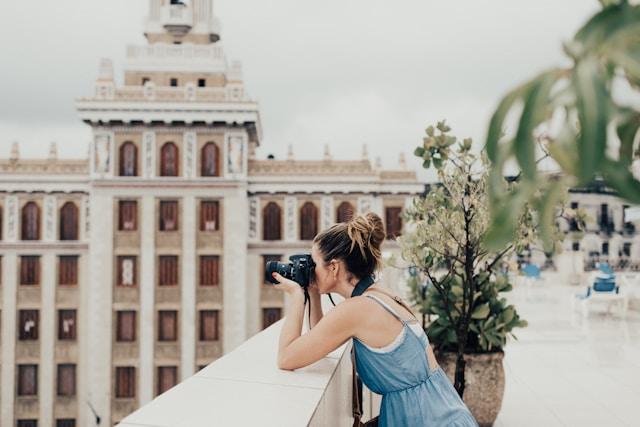It’s easy to take hundreds of photos when you travel. Beaches, street food, landmarks, sunsets—your camera roll fills up fast. But weeks later, most of those images sit untouched, slowly buried under newer shots from daily life.
Travel is too important to become digital clutter. Your memories deserve better than to be forgotten in a folder of generic thumbnails. With some planning and creativity, you can bring those moments to life—and actually enjoy them again.
Capture With Purpose, Not Pressure
When you’re caught up in documenting everything, it’s easy to lose sight of why you’re taking photos in the first place. Capturing every meal, every street corner, and every minute might feel productive, but it often leads to a bloated camera roll and forgettable images.
Instead, try to shoot with purpose. Focus on a few key moments that represent how a place made you feel—rather than how it looked. Take fewer photos, but better ones. Frame shots that tell a story or evoke a memory.
This is where stabilizing gear can help, especially when filming video on the go. Tools like gimbals for iPhone keep your footage smooth and professional-looking, even when you’re walking or shooting from a moving vehicle. A quick, steady clip of a local market or a winding trail can say more than a dozen shaky stills.
Turn Photos Into Something You Can Hold
One of the simplest ways to keep travel memories alive is to get them off your screen and into your hands. Printing your photos gives them new life and makes them harder to ignore.
Try a small photo book for each trip. Many online services let you upload photos straight from your phone or cloud storage and turn them into high-quality prints in minutes. Choose a clean layout, add a few captions, and you’ve got something personal you’ll actually look at.
If books aren’t your thing, consider a travel pinboard or a rotating photo frame. Even a handful of prints stuck to the fridge or framed on your desk can trigger the kind of emotional connection your phone gallery never will.
When your photos are part of your daily life, your memories stay fresh. You’re reminded not just of where you went—but of who you were when you went there.
Tell the Story, Not Just the Sights
Your camera captures the what. But it’s the why and the how that make it meaningful.
Make a habit of journaling during your trip. You don’t need to write full diary entries—just a few lines each day about where you went, what you felt, and what surprised you. Voice notes or a note-taking app on your phone can work just as well.
When you get home, pair these notes with your images. This can turn a random selfie in front of a monument into a meaningful story about what it felt like to finally stand there. The smell of the food. The music playing nearby. The rain that started five minutes later.
Captions can be just as powerful. When sharing on social media—or printing a photo book—include a line about what that photo means to you. These small details add emotion, context, and depth to the visual.
Create Traditions Around Your Travel Content
If your travel photos always end up sitting untouched, make it a tradition to revisit and relive your trips in a more engaging way.
Set a date once a month—or after each trip—to go through your latest travel folder. Sort, delete, and choose your favorites. Make it fun. Pour a drink, play music from the trip, and invite someone to join you.
From there, you can do something tangible: upload a few images to a shared album, update a travel blog, or add a page to a scrapbook. You might even turn the best shots into postcards and send them to friends as souvenirs from your past self.
Traditions help turn scattered images into something intentional. They make space for reflection—and they keep travel memories active, not forgotten.
Use Tech to Make It Easy
We’re fortunate to have powerful tools at our fingertips that make saving and organizing travel memories far easier than it used to be.
Apps like Google Photos and Apple Photos can automatically sort and tag your pictures by location, date, and even content. Use this to your advantage by creating albums during your trip, rather than waiting until the end. The fresher the experience, the easier it is to organize.
If you enjoy video, apps like Splice or CapCut allow you to quickly stitch clips together with music and effects. A 60-second highlight reel can be a powerful way to relive a trip—and it doesn’t take hours to make.
You can also sync video to audio journals or overlay text to turn raw footage into a personal narrative.
Just be mindful that these tools should serve your memories, not replace them. Avoid obsessing over polish or perfection. The goal isn’t to impress others—it’s to remember what the moment felt like.
Keep the Memories Alive After the Trip Ends
Travel can change you—but only if you carry the experience forward. Don’t let your best adventures fade into obscurity just because they’re out of sight.
Use your photos and stories to inspire new habits. If a trip reminded you how much you love hiking, look for trails near home.
If you fell in love with a certain dish, try to cook it yourself. Let the music, smells, and moments become part of your everyday life.
Share your memories in conversations. Tell people about the night you got lost and found a hidden café. Or how a stranger helped you navigate a bus route in a language you barely spoke. These small moments are often more powerful than the most postcard-perfect scenes.
When the Memories Matter Most
You don’t need a viral reel or an Instagram-perfect grid to make your travels meaningful. What you really need is time, intention, and a way to reconnect with what you experienced.
Make your photos part of your life—not just part of your storage. Tell the stories that only you can tell. And trust that the most important memories aren’t the ones with the perfect lighting—they’re the ones you choose to keep alive.






